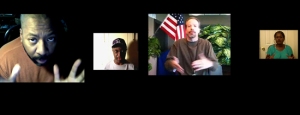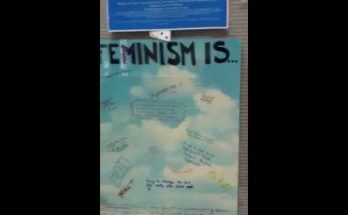I was driving home from the opening of Natalie Bookchin‘s amazing multi channel video installation, Now he’s out in public and everyone can see with fellow “video artists” Rachel Mayeri and Anne Bray and we were commenting on how hard it must be to make something that eloquent and prescient and beautiful—the result of two years of hard thinking and feverish work—and to live with the knowledge that the only people who will ever really see it are those lucky enough to walk through the doors of Hollywood’s LACE Gallery between the dates of March 8-April 15, 2012. Just look where YouTube has taken us to …
We want to believe that (like “video art” but so much more) all of our work can and should last forever, move where it must, and be seen by all who need it. This promise—that each and every one of our words, opinions, and voices will play a part of the cultural dialogue—is also (one of) the sad stories of Bookchin’s piece: a minimalist, refined statement upon the current and changing power of place and placenessless, circulation and stagnancy, video and sculpture, and voice and agency via YouTube. Eighteen monitors seem to float, hanging elegantly as they do from cables and hooks, suspended across a large blackened and muffled gallery in a dumbfounding materialization of circuitry, a compelling literalization of cyberspace, freeing visitors to walk into and through the multiple competing screens that usually sit so flat in front of us. While her other recent work (seen most recently at LACMA) begins to disperse one story across a sea of embodied voices—none of them her own, all of them eerily in synch, mouthing one way of being and knowing, even as each one of us retains our autonomy or not, lost as we are in a sea of undifferentiated testimony
[youtube http://www.youtube.com/watch?v=HoWzWrsugdY&w=560&h=315]
the new project fractures and sprays these “scatter-shot online voices” across the room, forcing the viewer’s body (not the computer screen) to hold all this variation, and pain, anger, desire, and loneliness. By forcing the work to be and stay room-, place- and time-bound, known as it will be only in and through our bodies (and sometimes those bodies dancing together across the room), Bookchin reminds us that speaking into the void (and being saved by the Internet) is no replacement for the beauties of ineffable place.


